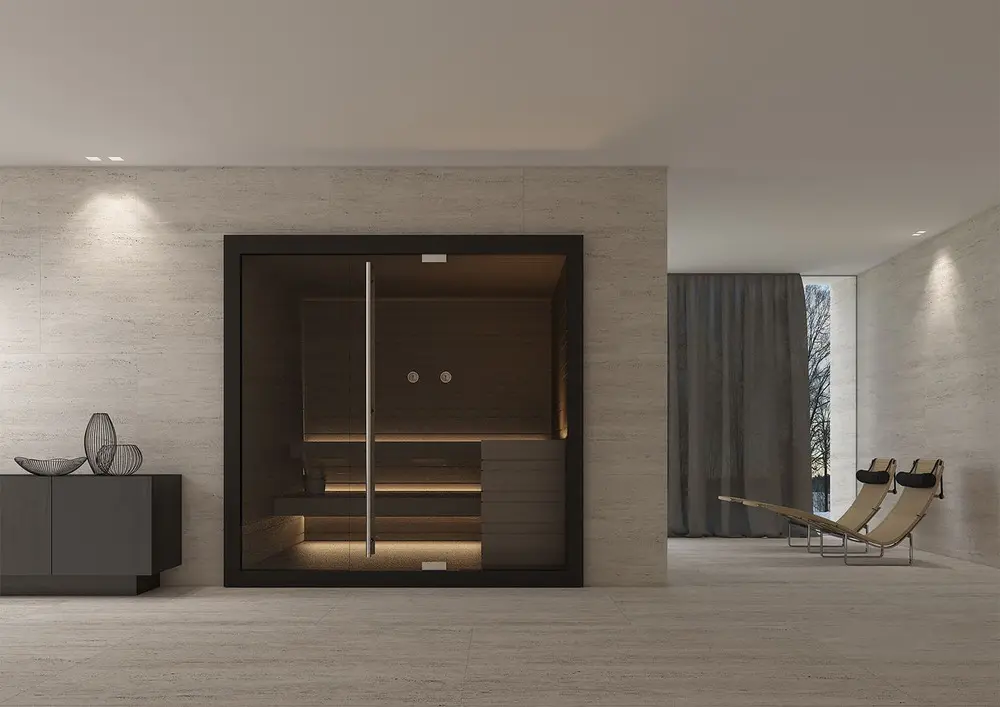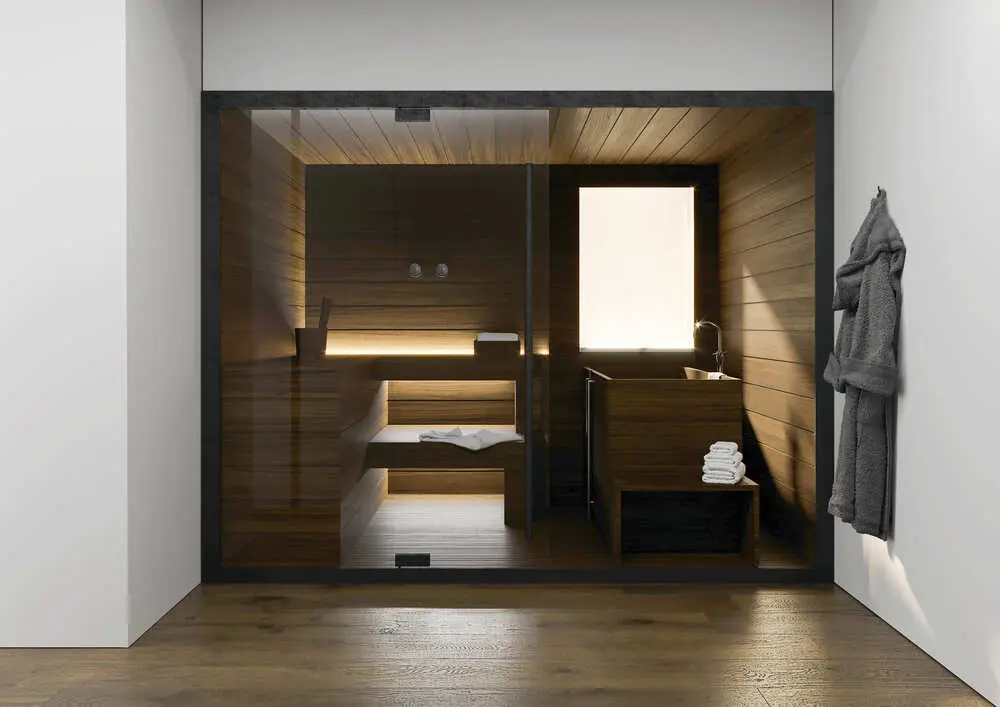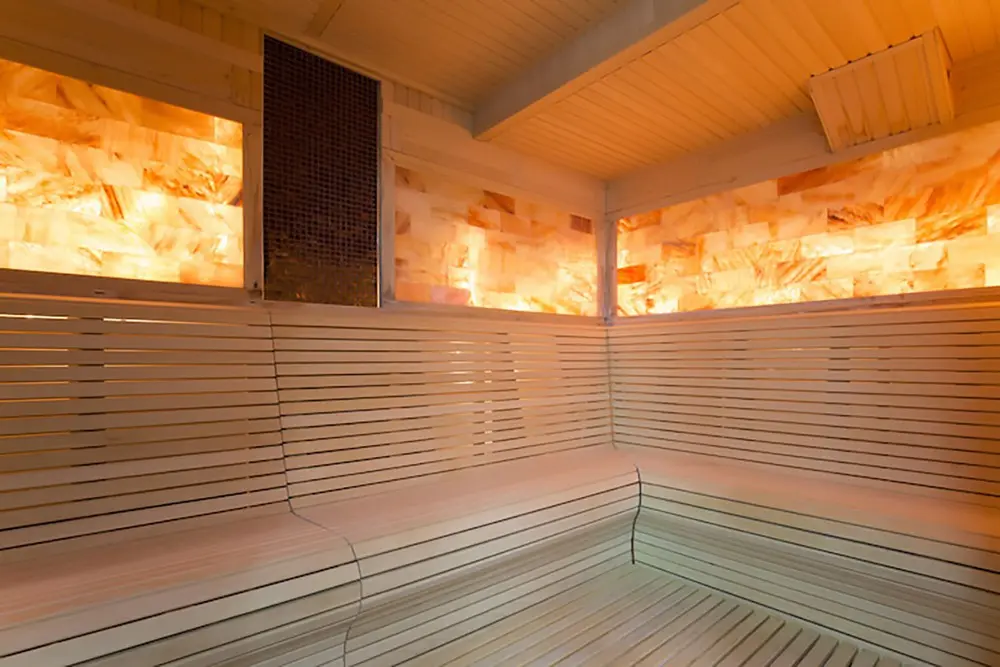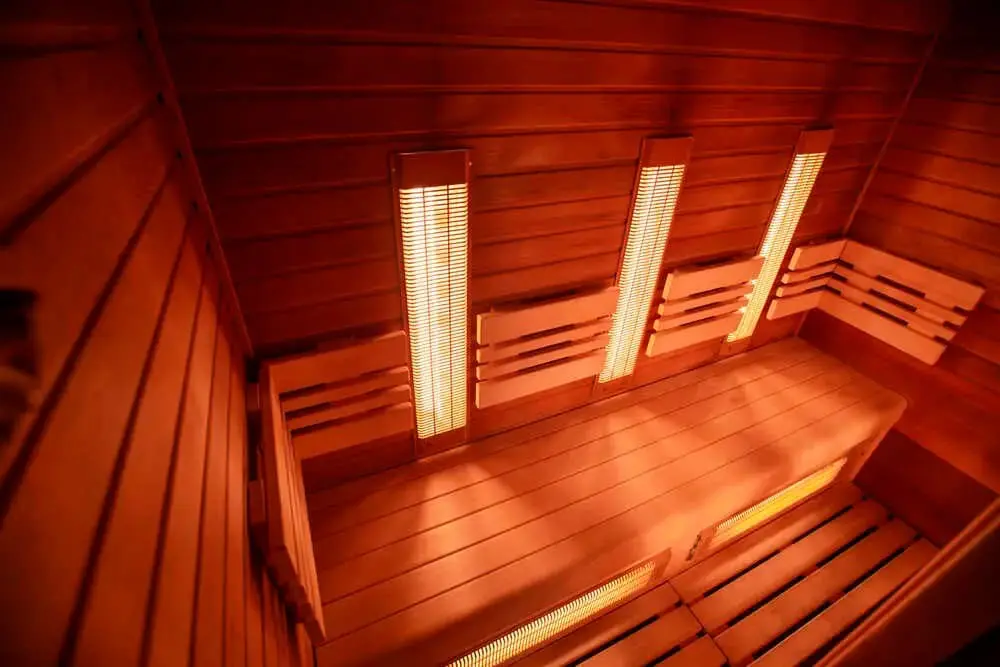Indulging in the soothing atmosphere of spa saunas offers a multitude of benefits for both the body and mind. In this article, we delve into the various types of saunas available, including Finnish saunas, wet saunas, biosaunas, salt saunas, and infrared saunas. Whether you are looking for detoxification, skin rejuvenation, stress relief, or respiratory improvement, spa saunas are an attractive option for any wellness facility.
Dive deeper with the eBook
What are spa saunas?
A spa sauna is a small room or enclosure designed to provide a temperature treatment to your body through the combination of heat, steam and other therapeutic elements. The heat can come from a variety of sources, such as electric heaters, steam generators or infrared lamps. Saunas can be made from a variety of materials, including wood, stone, acrylic and tile.
These wellness installations originated a long time ago when they were used as a therapeutic and social venue, and for many years it has been common for groups of people to convene in saunas to relax, talk and socialise. In fact, their history goes back to 2000 years ago in Finland. Nowadays, it’s a typical feature of wellness and spa centres, as well as sports clubs, hotels and resorts.

What different types of spa saunas are there?
Whether for a hotel, spa, sports club or other type of facility, it is important to make an informed decision about the different types of spa saunas available. Picking the right one for a business can make the difference that means customers come back time and again.
Finnish saunas
The Finnish sauna, which originated in Northern Europe, is a type of sauna that harnesses the power of dry heat. The humidity is typically kept around 5-20% and the temperature is set at around 70-90ºC. The attraction of such high heat is that it creates an extremely calming environment, helping users relax their muscles and alleviate respiratory conditions.
It has two basic elements in its design: the structure and the heater. The structure itself is made of wood, with inbuilt benches. It uses high-quality materials like oak, which helps to retain the sauna’s heat and can safely be subjected to high temperatures. The heater is usually electric, efficiently warming up the stones that radiate heat around the sauna.
Beyond its cultural and social nature, the Finnish sauna is a tool that has significant benefits for physical and mental health: detoxification, skin care, improved immune function, improved breathing, muscle relaxation, fluid retention and reduced stress. For more detailed information on this type of spa sauna, please visit our dedicated article.

Wet saunas or steam baths
Steam baths, also called wet saunas, steam rooms, hammam or Turkish baths, are just one of the many wellness solutions available to the clients of a wellness centre. Their main characteristic is that temperatures do not exceed 50ºC , while humidity is maintained very high (around 100%).
First used by the ancient Turks and Romans, and holding a place in the folklore of other countries, they utilise steam from hot water to obtain a warm and humid atmosphere. Nowadays, they have become an essential for the users of sport clubs, spas, wellness centres, hotels and resorts to unwind. Inside a steam bath, there is normally plenty of space for users to sit and relax on stone, wood or marble benches, while inhaling warm steam.
According to ancient tradition, the steam helps purify the body and soul. As a result, we now associate these spaces with health benefits that include: detoxifying the body, clearing pores, relaxing muscles, improving blood circulation, increasing oxygen levels in the body, reducing stress and relieving mental fatigue. More information on these types of wet spa saunas can be found here.
Biosauna
For many people, biosaunas are an alternative that is somewhere between the traditional Finnish sauna and the steam bath, as they offer an environment with a medium humidity level and a lower temperature than the traditional sauna. Their average temperature is about 50-60 ºC, with a humidity level of about 45-65%.
Usually, the structure of the biosauna is made with highly impermeable woods such as Northern Pine or Red Alder. Throughout a biosauna session, essential oils derived from various herbs are diffused, penetrating the outer layers of skin, revitalising them and stimulating the users’ senses.
As for their benefits, the effects on the body are similar to those of a sauna. However, biosaunas offer something else: they relax the mind and invoke a deep sense of peace brought on by the variety of calming scents. In addition, the lower temperature compared to a Finnish sauna allows the body to warm up gradually , without causing excessive stress. Treatment in a biosauna leaves the skin feeling radiant and more elastic.
Salt saunas
Salt is an up-and-coming method for spa saunas. This is for two reasons, both for the health benefits it offers as well as for its novelty. This is a modern and innovative solution to expand a business’ wellness services and attract potential users.
Salt saunas use Himalayan salt bricks which have been placed on the sides of the sauna to create a salt wall. They include benches or couches to rest on, as well as soft and relaxing lighting and aromatherapy. In the centre of the sauna or cabin is where the salt generator or halogenator is usually installed.
The temperature in salt saunas can be anything between 48 – 75ºC, while the relative humidity is between 20% and 50%. These conditions favour the natural process of salt ionisation.
Halotherapy, as it is also known, is entirely natural. Users breathe in the saline air with its mineral origin, which provides important benefits, particularly to people suffering from respiratory conditions, dermatological, muscular, circulatory and stress issues. More information on salt saunas can be found here.

Infrared saunas
The infrared sauna is quickly becoming a wellness centre favourite as competition among wellness businesses grows. Infrared spa saunas offer a new way to attract customers for a new experience.
Unlike a traditional sauna which heats the air, an infrared sauna uses infrared lamps (which employ electromagnetic radiation) to generate heat. The working principle of the infrared sauna is actually based on the functioning of infrared radiation.
Those who find the heat of the traditional Finnish sauna too intense will appreciate the infrared sauna. In fact, an infrared sauna can operate at a lower temperature (usually between 40ºC – 60ºC) and very low humidity, between 10 – 35%.
These saunas are often made of wood and the heater is made of carbon or ceramic. The use of infrared light spreads a warm atmosphere around the space and those within it, but also penetrates deep into the body’s tissues. This allows the user a relaxing experience with beneficial health effects. Thus, infrared rays promote the elimination of toxins, improve blood flow, relieve pain, promote physical recovery, reduce stress, and heal bone problems, among others. Find out more here.

What other types of materials are used?
Will your sauna be indoor or outdoor? This decision will rest on important business and design factors but will also be determined by where your facility is. After making this decision, professionals are on-hand to design the installation of the sauna.
In terms of materials, there are many options that can be chosen for aesthetic reasons. For example, wood is perfect to create a rustic, traditional environment while stone edges offer a more sleek, modern look.
Although various materials are used in sauna installations, wood tends to be the most common. There are many types of wood used in saunas, and each has its own appearance and suitable properties for insulation and durability in heated and humid environments.
As an organic material wood requires special maintenance. If it isn’t properly protected and treated, the exposure to extreme temperatures and moisture can affect its structural integrity and appearance. The use of wood preservatives is highly recommended.
No matter which material is used in the construction, cleaning and regular maintenance is of the utmost importance. Hygiene standards must be kept up with in order to provide a pleasant experience to users, as well as to ensure durability.
A range of choice for users with exacting relaxation requirements.
There is a wide array of choice among spa saunas, demonstrating just how far the industry has come. Whether it is for a hotel, sports club, wellness centre, resort or other, a sauna can add a unique touch to any leisure offering. The therapeutic benefits to your users’ health, mind and body relaxation, and general detoxification are huge. Installing a sauna is a worthy investment that will ensure users keep coming back.
